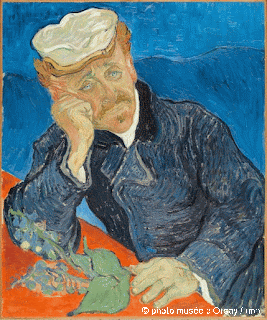Tuesday, January 07, 2014 -  Interpol,Judge Arthur Tompkins
Interpol,Judge Arthur Tompkins
 No comments
No comments
 Interpol,Judge Arthur Tompkins
Interpol,Judge Arthur Tompkins
 No comments
No comments
Postcard from Paris: ARCA Lecturer Judge Arthur Tompkins visits INTERPOL and swabs for DNA analysis
INTERPOL is, in popular culture, a near-mythical organisation, one that tends to conjure up an aura of omnipotence and omnipresence, exercising extensive powers and influence, not to mention deploying an army of emblazoned officers to patrol the world’s trouble spots. Every now and then a shadowy black-ops Interpol force supposedly swings into well-oiled action, to keep the world safe from nefarious villains bent on world domination, and then fades back into the shadows from whence it came.
For example, a few years back, in the Hollywood blockbuster, ‘The International’, Clive Owen played an intrepid Interpol officer who single-handedly pursued and destroyed a vast international criminal bank across an ever-changing backdrop of a variety of exotic international locations, enduring but never succumbing to repeated and seemingly never-ending hailstorms of bullets.
The reality is a little more prosaic. INTERPOL’s core business is as an information clearing house, global communications network, database repository, and point of contact between national police forces. It has a staff of about 700, split between permanent and contracted staff, and police officers and other personnel seconded to INTERPOL from member states’ national police forces. INTERPOL does not itself arrest criminals, nor does it operate any incarceration facilities, - those activities it leaves up to ordinary run of the mill police forces. It does provide specialist teams to assist in the event of things like mass disasters, very high-profile security assistance, and situations requiring very specialist skill-sets, like dealing with Somali pirates off the coast of West Africa. It is these folk who you might see wearing and carrying the INTERPOL branding.
It is to the glass and marble headquarters building on the banks of the Rhone River in Lyon, France, that I return every couple of years or so for a regular Forensic DNA Users conference. Approaching the building, as I usually do atop my Velib bike along a long path lined by tall Plane trees running parallel to the Rhone River, the security arrangements are immediately obvious – a high and spiky-topped green steel fence surrounds the whole building, topped by several parallel strands of what look like (and doubtless are) high voltage wires. The only way in is through a stylishly designed gatehouse, where one’s passport is scrutinised and checked against a list of names of those expected to pay a visit that day. Bags are X-rayed, bodies are scanned in airlock type thingies with curved glass sliding doors, and then you emerge on the other side to cross a paved open courtyard (this week, usually swept by persistent rain …) to the main front entrance of the building itself.
Inside things are quite striking. The central core of the building is an airy and light-filled hexagonal central atrium that rises five floors to the glass roof. The floor of the atrium has a large, tiled mosaic of the Interpol crest centred around a world map. Arrayed around this atrium are several floors of offices, served by glass-sided elevators running up and down the corners of the atrium. On the ground floor are a large auditorium, where the conference is held, meeting rooms, a substantial dining room and, importantly, a large bar/café presided over by the smoothly balletic Christian – he has been presiding over the Interpol bar for all of the ten years I have been coming here, and he does so with a mesmerisingly smooth grace and economy of movement – never flustered, always elegant and measured and efficient. An artiste of a barista …
The other notable, and perhaps unexpected, feature is the INTERPOL gift shop. There one can select from a wide range of INTERPOL-crested items, including silk ties and scarves, vases, letter openers, mousepads, children’s wear and other attire. It also stocks a range of wine – this is France, after all. Given its location, this shop probably has the lowest rate of stock losses to light-fingered larcenists of any boutique, anywhere.
The other highlight of this year’s conference has been that I now have had done my very own forensic DNA profile. During the conference a number of companies have been displaying the very latest in high-speed DNA analytical engines. What once took weeks in a specialised lab, using an array of delicate scientific instruments and robotically controlled analytical wizardry operated by a series of highly trained scientists and analysts, can now be done in about 90 minutes in a box roughly the size of a large photocopier (Should you wish to buy one, it will however set you back about US $250,000,000). I duly scrapped the inside of my cheek with a cotton bud, popped it into the required receptacle, and 90 minutes later my DNA profile popped out. What immediately lept off the page describing my genetic make-up is a glaringly obvious, genetically-based but regionally-variable, vulnerability to sweet treats. In Italy this manifests itself in an irresistible attraction to gelato; here in France it is a similar weakness for Fauchon-style macaroons. Also discernible is my repetitive tendency to indolence…
I’m thinking of having this printed onto a convenient wallet-sized plastic card. Teamed up with my Vatican library card, the matching pair would provide unique ID cover for both ends of the spectrum – in the spiritual realm with the Vatican card, and in the Darwinian world, my DNA ID …
Au revoir, Lyon.























